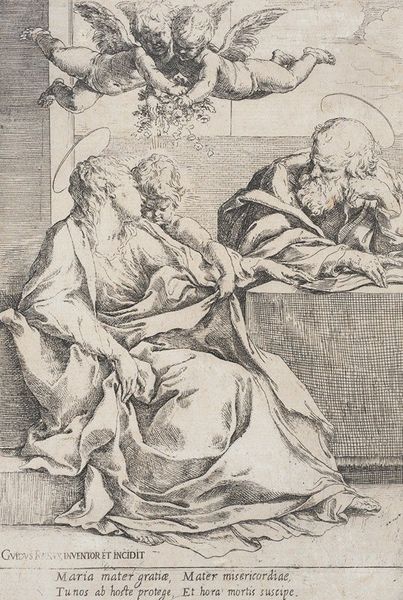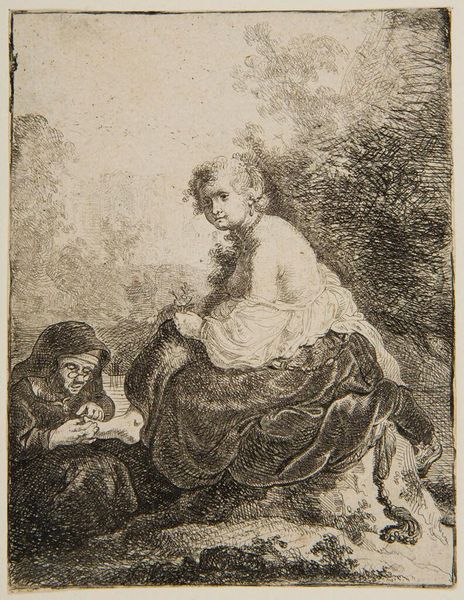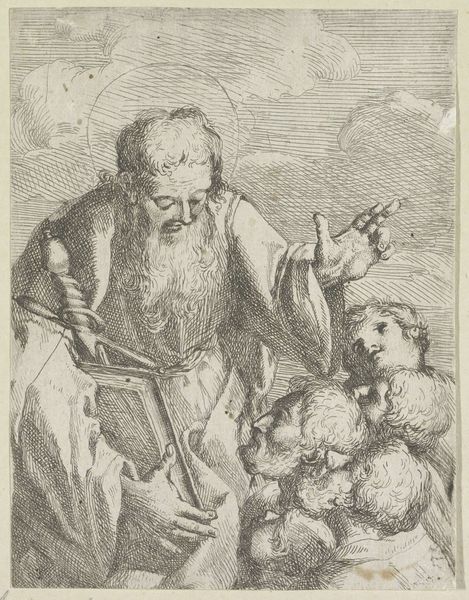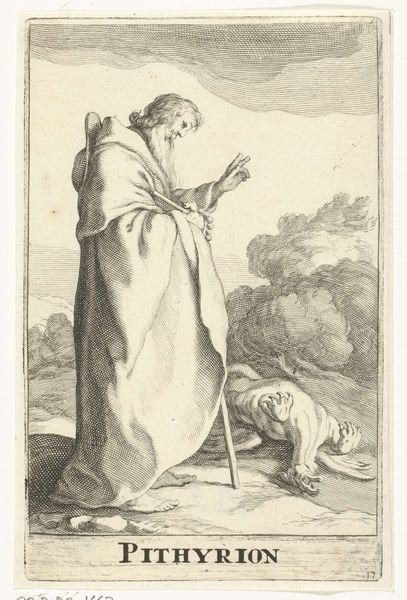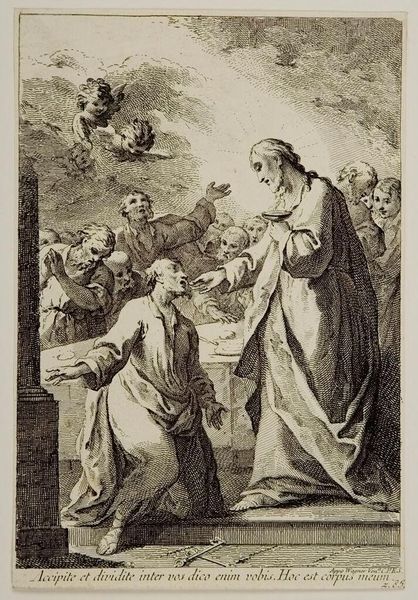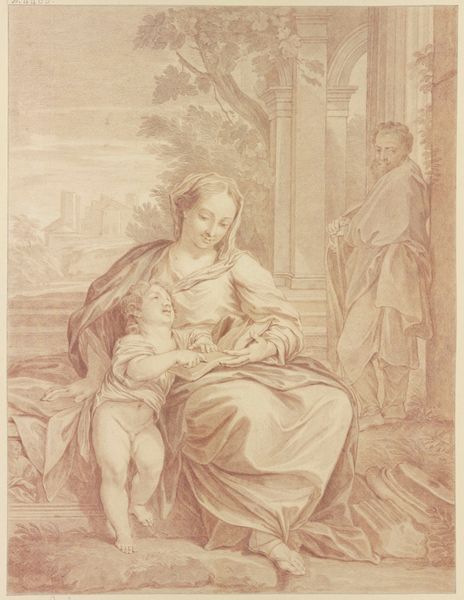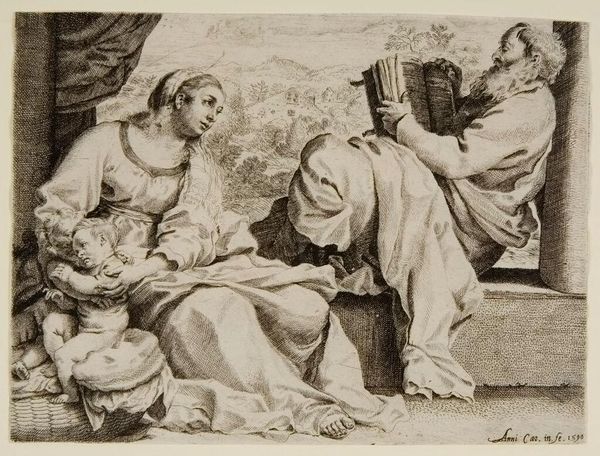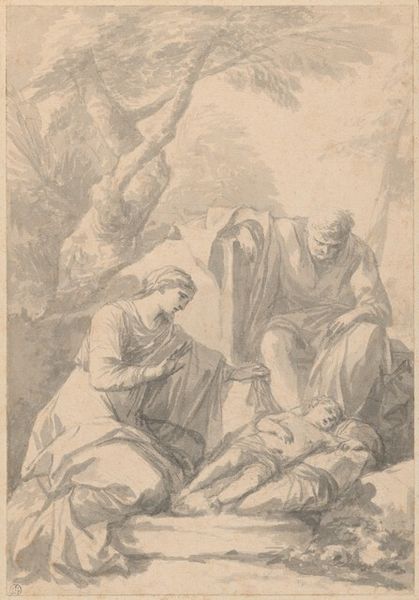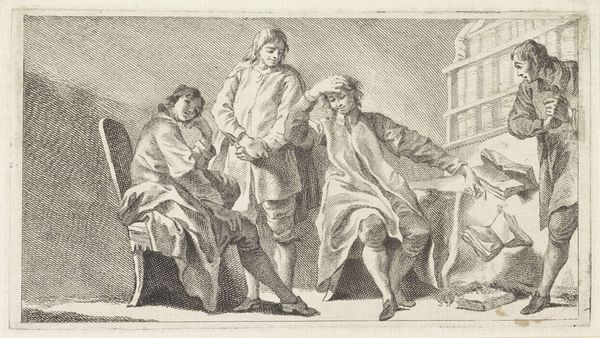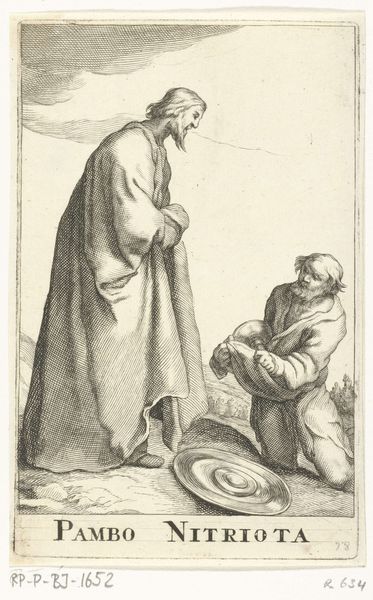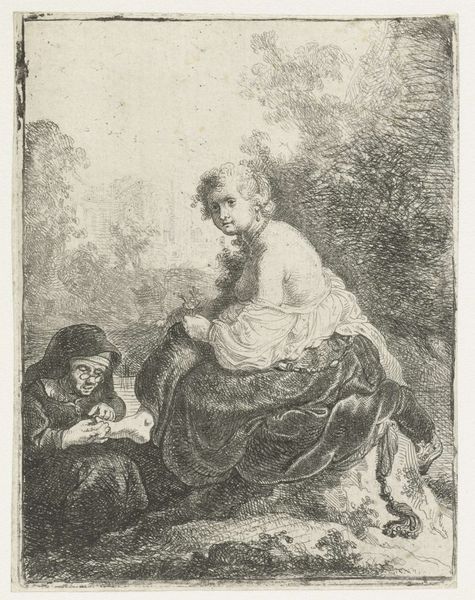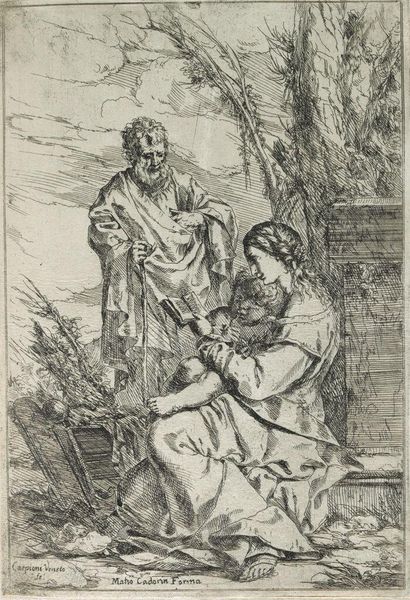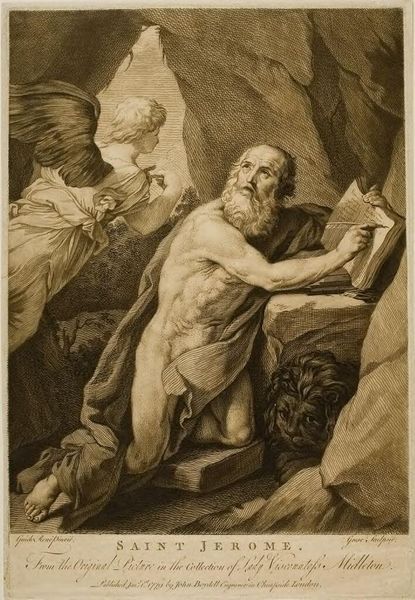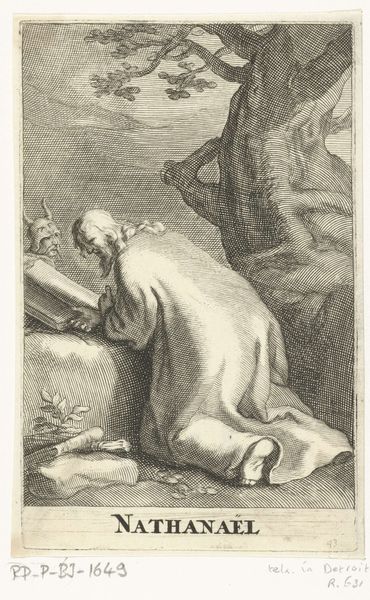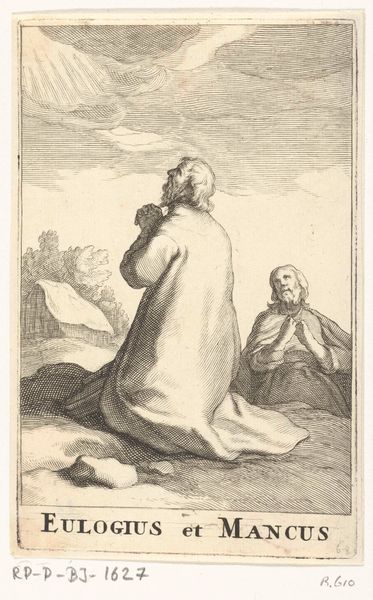
Saint Joseph Seen with his Flowering Staff, which is Held by the Christ Child 1591 - 1666
0:00
0:00
drawing, charcoal
#
portrait
#
drawing
#
baroque
#
charcoal drawing
#
figuration
#
charcoal
#
history-painting
Copyright: Public Domain: Artvee
Curator: This work is attributed to Guercino, an Italian Baroque artist. It's a charcoal drawing titled "Saint Joseph Seen with his Flowering Staff, which is Held by the Christ Child," estimated to have been created sometime between 1591 and 1666. Editor: My immediate impression is one of sketched intimacy, softened by the sepia tones. There is a sense of tentative yet assured creation, revealing human touch through these humble materials. Curator: Indeed, the composition guides our eye through deliberate arrangements of light and shadow. Consider the stark lines defining the contours of Saint Joseph versus the gentle curves illustrating the Christ Child. The flowering staff also carries rich symbolism related to divine selection and fatherhood. Editor: Precisely, and it's fascinating to ponder how the materials influenced Guercino's vision. Charcoal offers immediacy—mistakes become learning tools rather than failures, and corrections show a thinking hand. This quick method aligns with the era’s demand for efficiency in religious art production. It wasn’t precious; it served purpose. Curator: While I recognize charcoal's practical advantages, I remain captivated by the artist’s careful management of space and form. Notice how both figures inhabit the composition not just physically, but psychologically; each possesses an independent gaze and purpose within shared dimensions. Editor: But shouldn’t we consider who was obtaining this art? This was for private devotional consumption for families or high church officials, not some public expression for "the people." These types of sketches offer incredible windows into both economic frameworks of the time and devotional object production! Curator: Perhaps…but viewing it purely as the by-product of economic needs, however, risks undermining Guercino’s ability as a maker. Surely there's a complex relationship here between material constraints and aesthetic ambition. Editor: Absolutely; however, examining art this way makes room to look at other skilled artisans of the period also using humble means, inviting reflection of the social labor surrounding creative production, not merely a celebration of individual ingenuity. Curator: I see your point. Understanding the cultural context of making allows for a more thoughtful reading that appreciates skill and historical understanding. Editor: And that charcoal—cheap but essential, transforms paper and pigment. It reveals so much.
Comments
No comments
Be the first to comment and join the conversation on the ultimate creative platform.
